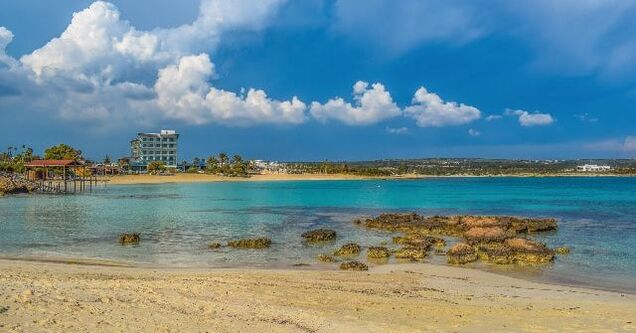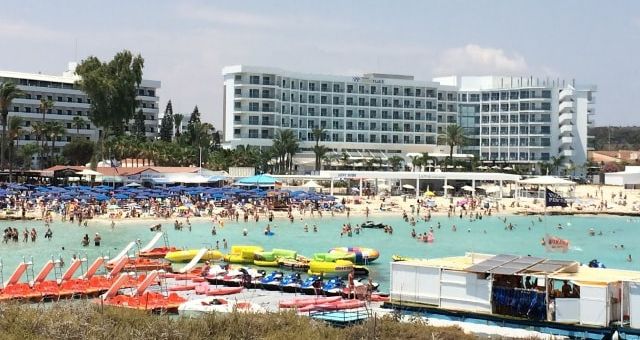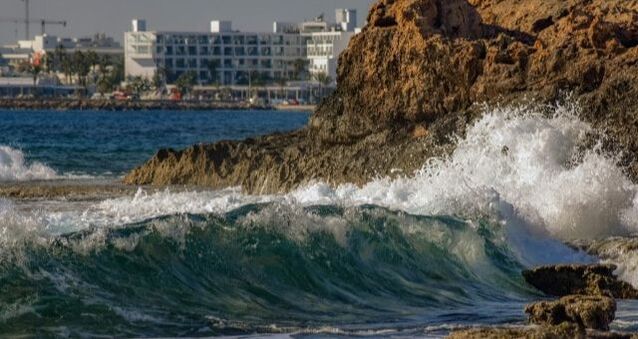About Ayia Napa
|
As well as the amazing beaches and lively nightlife, there are plenty of shops in Ayia Napa selling everything from souvenirs and beach wear to jewellery and designer label fashion.
You can bungee jump, ride the slingshot, ride a quad bike or scuba dive. You can go to a rooftop sunset party, a pool party, a foam party, on a boat trip or take a bar crawl around Ayia Napa. There are hairdressers, tattooists’, beauticians and gyms, as well as dance classes and fitness instructors. Ayia Napa has a 14th century monastery, a museum and several churches. There are sea caves, a national forest park area and bicycle paths. Experience the outdoor Sculpture park, seafront walkway and numerous pieces of street art. Regular festivals and events showcasing traditional music and dances are held throughout the year. There is a funfair, a waterpark and work is well underway on a new state of the art marina development. Ayia Napa has a police station, a radio station and a primary school. As with any town you will also find florists, mechanics, bakeries, computer shops, camera shops, dentists, doctors, betting shops, estate agents, travel agents, insurance companies and many other businesses useful for both tourists and residents. You can't help but fall in love with the modern, cosmopolitan town of Ayia Napa but you will still find glimpses of the traditional fishing village that once was. |
Ayia Napa is much bigger than many other holiday resorts and is quite spread out. Starting from the west as you approach Ayia Napa you first come to Ayia Thekla which is a huge development of villas, a mix of residential and holiday lettings. Ayia Thekla has its own beach as well as lots of smaller secluded spots of sand along the seafront.
Next is Makronissos which is where you'll find Waterworld Waterpark and several good standard hotels and apartments. This sleepy area is becoming more developed and the new Ayia Napa marina wis located here. Makronissos has 3 gorgeous beaches and just next door is equally lovely Landa Beach. Nissi Beach with its twin bays is the most popular beach in the town and is where most people head to during the day. It is mainly higher standard hotels in this area and it is also a top destination for couples getting married abroad. As we head long Nissi Avenue we next come to Sandy Bay which is a lovely sheltered cove. The whole area from Makronissos to Sandy Bay is often now called Nissi Bay and is almost a mini resort in itself with a selection of family friendly bars and restaurants away from the bustle of the town so families often choose this area for holidays. |
A couple of kilometres east along Nissi Avenue, past many shops and restaurants, we come to the town centre. This is where the majority of the bars and all the clubs are located. It's also where you'll find plenty of shops, the harbour and lots of things to do.
Heading from the harbour eastwards but still within walking distance of the town centre is Pantachou Beach, a long sweep of sand with several high standard hotels, a selection of restaurants and a more upmarket feel to it.
As we head out of town to the east we reach the stunning sea caves, popular for cliff diving and then on to Cape Greco, which is a national forest park. Here you will also find the gorgeous pine fringed beach of Konnos Bay. Cape Greco is popular with hikers, walkers, cyclists and nature enthusiasts.
It's also a popular spot for diving and fishing and is the best place to watch the sunrise. A few miles further on you reach the neighbouring holiday resort of Protaras.
Heading from the harbour eastwards but still within walking distance of the town centre is Pantachou Beach, a long sweep of sand with several high standard hotels, a selection of restaurants and a more upmarket feel to it.
As we head out of town to the east we reach the stunning sea caves, popular for cliff diving and then on to Cape Greco, which is a national forest park. Here you will also find the gorgeous pine fringed beach of Konnos Bay. Cape Greco is popular with hikers, walkers, cyclists and nature enthusiasts.
It's also a popular spot for diving and fishing and is the best place to watch the sunrise. A few miles further on you reach the neighbouring holiday resort of Protaras.









